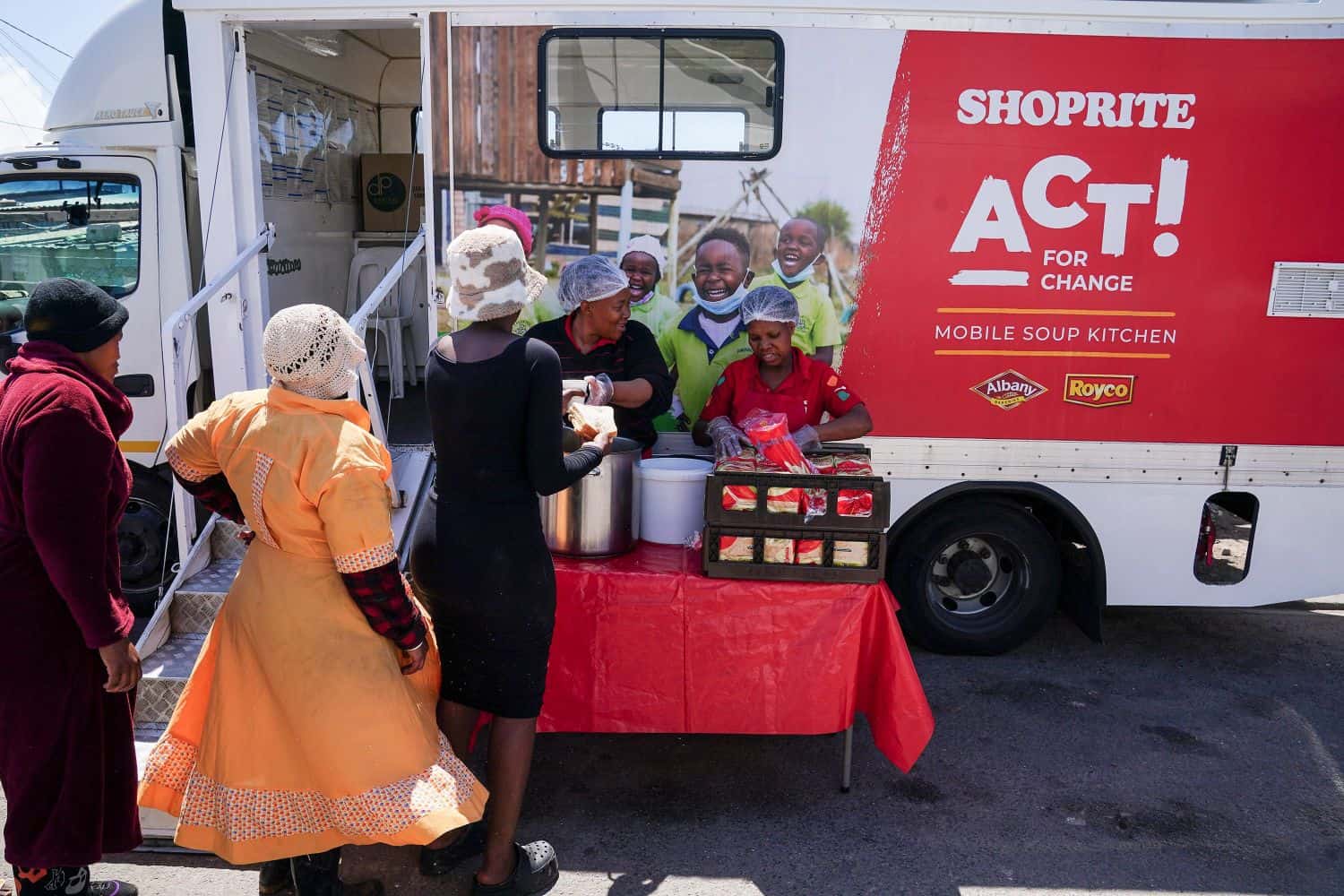Not all South Africans go to sleep at night after a full plate of nutritious food. Some people, especially in rural areas, go to bed hungry.

Food security in South Africa has improved slightly, but people are still going hungry, with price still the biggest influence on the food choices of low-income consumers.
The sad news is that the number of households with children that experience hunger increased from 9% in 2023 to 11.9% in 2024.
Every year on World Food Day the Shoprite Group publishes the South African Food Security Index aimed at keeping the country’s hunger crisis at the forefront of the national conversation. The research is conducted by economists at Stellenbosch University.
According to the latest index, the SA Food Security Index increased to 56.5, up from 44.9 in 2023. While this improvement is encouraging, Sanjeev Raghubir, chief sustainability officer at Shoprite says it remains below the 2019 score of 65.8, when hunger levels were notably lower.
The Food Security Index aims to provide credible, independent and reliable data to monitor South Africa’s progress in addressing hunger over time, in response to the country’s significant research gap on hunger and food insecurity.
To achieve this, the Food Security Index measures four factors using publicly available and annually released data on food regarding affordability, accessibility, dietary diversity and stability.
ALSDO READ: Groceries still more expensive than last year despite small decreases
Food Security Index score picking up after 2023
The Food Security Index score of 44.9 in 2023 was the lowest since 2010. Raghubir says this change reflects a slight increase in the proportion of households satisfied with the diversity in their diets compared to the previous year, an increase in school feeding schemes and lower food inflation.
However, he points out that while there was a marginal improvement, giving reason for hope, that hunger remains a national crisis.
Other key findings of the Food Security Index include that:
- All provinces except the Eastern Cape experienced an improvement in Index values in 2024;
- While most households (80.8%) ate more than six food groups, almost 20% of households ate too few food groups;
- The Free State had the worst dietary diversity, with almost half the population (49.3%) consuming an inadequate diet eating three or fewer food groups in the last 24 hours when questioned; and
- Female-headed households were more likely than male headed households to be food insecure. In urban households 8.4% of men experienced hunger and 13.3% of women, while in rural households 12.6% of men went hungry and 15.1% of women.
ALSO READ: Competition Commission’s report shows shocking price increases in SA over past five years
Dietary diversity in Food Security Index
According to the report, dietary diversity is shaped by affordability, scarcity and retailer. The dietary diversity findings included:
- South Africa’s agricultural sector is highly diverse and able to meet most of the country’s fruit and vegetable needs;
- Supermarkets are the main retail provider of food to households, followed by informal food vendors;
- The poorest households purchase more of their food from informal vendors;
- 20% of SA households showed medium-to-low dietary scores;
- 49.3% of the Free State consumed an inadequate diet,; eating three or fewer food groups in the past 24 hours; and
- Sugars and sugar-rich foods like cereals and condiments was the food group eaten most frequently by South Africans.
The lowest consumption rate is for meats (28.8%) and orange-coloured fruits (19.2%). More than 78% of public school children now benefit from school feeding programmes, while 23% of South African children live in severe food poverty, placing South Africa among just 20 nations responsible for 65% of affected children worldwide.
ALSO READ: Lower diesel price unlikely to ease pressure of food prices for hungry consumers
Food security one of the defining challenges identified in Food Security Index
Raghubir says food security is one of the defining challenges of our time. “While we are encouraged by incremental improvements, hunger will only be defeated if business, government and civil society work together.
“However, we are proud of the role the Shoprite Group is playing in making food affordable for millions of South Africans. Price remains the driving factor in determining what families eat and our business contained internal food inflation to just 2.3% in its 2025 financial year, despite broader cost pressures.”
Raghubir also points out that Shoprite offers many affordable options, such as subsidised R99 food combos, R5 deli meals and R5 loaves of bread. The 27.7 million loaves of R5 bread sold in 2024 would stretch from Cape Town nearly all the way to London.
Through owning about 21% private-label (privately owned or exclusively sourced products), the Group is able to exercise greater influence over the pricing and value of thousands of food products.
ALSO READ: Statistics show almost a quarter of South African households go hungry
Support for community food gardens and donations of surplus food
The retailer has also delivered more than R55 billion in instant cash savings since the Xtra Savings rewards programme was launched in 2019. In the 2025 financial year, members saved R16.5 billion at Shoprite and Checkers supermarkets.
To increase food diversity, the retailer supported 287 community food gardens since 2015 where an estimated 106 595kg of vegetables were produced last year and 3 593 community members were trained.
In the past financial year, it also donated R258 million in surplus food and goods and its fleet of 33 Shoprite Mobile Soup Kitchens served 8.9 million meals.
Raghubir says the group also makes food increasingly more accessible through a wide footprint, with a store in easy reach of most South Africans.
“The slight improvement in the index shows that progress is possible and should inspire collective action from all sectors in South Africa.”






